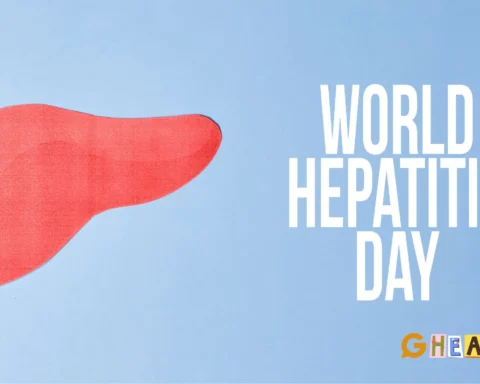Parkinson's disease is a neurodegenerative disease impacting millions worldwide, characterized by tremors, stiffness, and difficulty with movement. While current treatments manage symptoms, they don't halt the underlying progression. Parkinson's gene therapy emerges as a potential game-changer, offering a novel approach to treating the disease at its roots. This article explores the latest advancements in Parkinson's gene therapy, shedding light on groundbreaking research and promising developments that offer new avenues of treatment.
Listen To This Podcast: Fighting the Stigma around Parkinson’s with Sanjeev Dixit
Table of Contents
Understanding Parkinson's
Parkinson's disease unfolds due to a complex interplay of genetic and environmental factors that ultimately lead to the degeneration of dopamine-producing neurons (dopaminergic neurons) in the substantia nigra, a region deep within the brain. Dopamine plays a crucial role in coordinating movement, and its depletion results in the characteristic symptoms of Parkinson's.
Genes Associated with Parkinson's
Parkinson's disease is caused not by a single gene but by mutations in several different genes. These genes contribute to the development of the disease in varying ways, and their specific roles are still under investigation.
SNCA: This gene codes for the protein alpha-synuclein, a major component of Lewy bodies, the hallmark pathological feature of Parkinson's. Mutations in SNCA are associated with early-onset Parkinson's. These mutations are more common in early-onset forms of Parkinson's, regardless of familial history, but they occur less frequently in the overall population compared to LRRK2.
LRRK2: This gene is the most common known genetic risk factor for Parkinson's in familial and sporadic cases. Mutations in LRRK2 are associated with late-onset Parkinson's. Studies report a mutation frequency ranging from 2% to 40% in different populations, highlighting its significant contribution.
PARK7, PINK1, and PRKN: These genes are involved in various cellular processes, including mitochondrial function and protein degradation. Mutations in these genes are associated with rare forms of early-onset Parkinson's.
GBA (GCase) gene mutations: These mutations are the most common known genetic cause of Parkinson's in individuals of Ashkenazi Jewish descent, even though they contribute less overall compared to LRRK2 or SNCA mutations.
While mutations in these genes increase the risk of developing Parkinson's, they are not the sole cause in all cases. Environmental and lifestyle factors likely play a role in the disease's development and adverse effects, and the interaction between genetics and these factors is still being unravelled.
Treatment Options for Parkinson's
Both gene therapy and cell therapy are emerging treatment options for Parkinson's disease, but they use different approaches to address the condition.
What is Gene Therapy?
Gene therapy is a technique that aims to treat or prevent diseases by introducing genetic material (genes) into cells to modify their function. It's like fixing a faulty instruction manual within a cell by replacing the incorrect information with the correct one. This potentially alters how the cell behaves and ultimately impacts the disease process.
What are Vectors?
Vectors are microscopic delivery vehicles. They act like tiny capsules that carry the therapeutic genes and ferry them into the target cells. These vectors ensure the genes reach their intended location within the body and are successfully incorporated into the cells' machinery.
In gene therapy trials, vectors deliver therapeutic genes into target cells. Two commonly used vectors in gene therapy are:
Viral Vectors: Viral vectors are derived from viruses that have been modified to carry therapeutic genetic material instead of their viral genome. Adeno-associated Viruses (AAVs) and lentiviruses are two examples of viral vectors commonly used in gene therapy. AAVs are particularly popular because they can infect a wide range of dividing and non-dividing cells without causing significant immune responses.
Non-viral Vectors: Non-viral vectors encompass a diverse range of delivery systems that do not involve viral components. These vectors can include liposomes, nanoparticles, and naked DNA. Non-viral vectors offer advantages such as reduced immunogenicity and the ability to accommodate larger DNA payloads. However, they often face challenges related to efficiency and stability compared to viral vectors.
You Might Be Interested In: Acute Parkinsonism: 5 Early Warning Signs You Shouldn’t Ignore
Types of Parkinson's Gene Therapy
Traditional treatments, such as levodopa, primarily focus on managing symptoms by replenishing dopamine levels. However, these medications lose their effectiveness over time, and their long-term use can lead to unwanted side effects. Gene therapy, on the other hand, offers a unique approach by introducing genetic material directly into cells, aiming to modify their function and potentially halt or even reverse the disease process. Parkinson's gene therapy future studies encompass various strategies, each targeting specific aspects of the disease:
Non-Disease Modifying Therapy: Alleviating Symptoms, Improving Quality of Life
Enzyme Replacement: This gene therapy approach focuses on introducing genes for enzymes involved in the dopamine production pathway. Early clinical trials have shown promising results in improving motor function, with ongoing research to refine the effectiveness and delivery methods.
Modulating Neural Circuits: Another strategy involves introducing genes that regulate the activity of specific brain circuits. This aims to restore balance and improve movement control by influencing neurons in areas like the subthalamic nucleus.
While these approaches offer symptomatic relief, they don't address the underlying cause of the disease. However, their ability to significantly improve patient's quality of life and potentially slow down the progression of symptoms makes them valuable tools in the fight against Parkinson's.
Disease-Modifying Therapy: Striving for a Cure
This more ambitious approach seeks to address the root cause of Parkinson's by:
Gene Correction: This strategy involves repairing or replacing faulty genes responsible for the disease in individuals with specific genetic mutations. This approach holds significant promise for individuals with familial Parkinson's, but its application to sporadic cases, which are more common, requires further research.
Neuroprotection: Introducing genes that promote the survival and function of dopamine-producing neurons is another promising avenue. These "neuroprotective" genes can potentially slow down the degenerative process and preserve neurological function for a longer duration.
Gene Editing: The advent of cutting-edge tools like CRISPR has opened doors to precise gene editing. This allows scientists to modify genes implicated in Parkinson's with unprecedented accuracy, offering a highly targeted approach with the potential for long-term benefits.
These disease-modifying therapies represent a significant leap forward in the quest for a cure for Parkinson's disease patients. Although challenges remain in terms of safety, efficacy, and delivery methods, the pre-clinical studies in animal models and humans are encouraging, offering hope for a future free from the debilitating effects of this disease.
Challenges of Gene Therapy
Parkinson's gene therapy, despite its immense potential, faces several challenges:
Safety: Ensuring the safety of introducing genetic material into the brain is paramount. Potential risks include off-target effects, immune reactions, and unintended changes in gene expression, requiring rigorous safety testing before widespread clinical application.
Efficacy: It is crucial to demonstrate the long-term effectiveness of gene therapy. Clinical trials need to be designed to assess not only symptom improvement but also the ability to slow down or prevent disease progression. Primate models, particularly those employing midbrain dopaminergic lesions, have played a significant role in preclinical studies.
Delivery Methods: Delivering the therapeutic genes safely and efficiently to the targeted brain regions remains challenging. Researchers are exploring various methods to overcome this hurdle, including viral vectors and nanoparticles.
Ethical Considerations: Gene therapy involves altering an individual's genetic makeup, so ethical considerations regarding informed consent, long-term consequences, the tolerability of gene therapy, and the potential impact on future generations must be carefully addressed.
Cell Therapy
One promising approach is Glial Cell Line-Derived Neurotrophic Factor (GDNF) Dopaminergic cell therapy. GDNF is a protein that promotes the survival and function of dopamine-producing neurons. In this approach, scientists derive dopamine-producing cells from stem cells or other sources and implant them into the midbrain dopaminergic region of the brain affected by Parkinson's. These transplanted cells are expected to produce dopamine, potentially improving motor skills and reducing the severity of Parkinsonian phenotype (the characteristic symptoms of Parkinson's).
Evaluating Efficacy and Safety
Human trials are crucial to assess the safety and efficacy of any new treatment. These trials involve administering the therapy to participants with Parkinson's and carefully monitoring their response. Primary endpoints in such trials typically include measuring changes in motor skills, such as tremor severity and walking ability. Additionally, researchers assess other key aspects like dopamine production and the development of any potential side effects.
Challenges and Considerations in Cell Therapy for Parkinson's
While cell therapy holds immense promise, several challenges remain:
Finding the optimal cell source: Ensuring the safety and efficacy of the transplanted cells is crucial. Choosing the right source for these cells is essential, with ongoing research exploring options like stem cells and fetal tissue.
Delivery and integration: Safely and efficiently delivering the cells to the targeted brain region is another challenge. Researchers are investigating various methods, including minimally invasive surgical techniques, to ensure proper integration of the cells into the brain circuitry.
Long-term effects: Cell therapy's long-term safety and efficacy for Parkinson's require further investigation. Monitoring patients for extended periods after transplantation is crucial to understand the potential benefits and risks associated with this approach.
Listen To This Podcast: Fighting the Stigma around Parkinson’s with Sanjeev Dixit
Conclusion
Gene therapy is a rapidly evolving field with ongoing research and clinical trials. While challenges remain, the initial advancements offer a compelling vision for the future. Collaboration between researchers, clinicians, and patient advocacy groups is crucial to overcome these challenges and translating the promise of Parkinson's gene therapy into tangible benefits for patients.
FAQs
What are the 4 types of Parkinson's disease?
While there are various classifications for Parkinsonism, the term "Parkinson's disease" itself typically refers to one specific type. However, other forms of Parkinsonism with similar symptoms but distinct underlying causes exist, including secondary Parkinsonism, drug-induced Parkinsonism, and atypical Parkinsonian syndromes like Lewy body dementia and multiple system atrophy.
Is there a test for Parkinson's gene?
There is currently no definitive genetic test for diagnosing Parkinson's, but tests for specific genes associated with increased risk can be performed for research or to inform family planning decisions.
Where is the Parkin gene located?
The Parkin gene (PRKN) resides on chromosome 6, specifically at the 6q25.2-27 region.
What is the most promising treatment for Parkinson's?
Gene therapy and cell therapy are currently at the forefront of research. They hold great promise for addressing the root cause of disease and offering long-term benefits.











[…] the tremors, stiffness, and imbalance that come with Parkinson's disease, Ayurveda for Parkinson’s disease would suggest a condition caused by disturbances of the Vata […]
[…] is a neurological disorder that is characterised by the loss of movement ability. Living with Parkinson's disease presents challenges that can impact daily living, daily activities and overall well-being. However, […]
[…] ALSO READ: Parkinson’s Gene Therapy: A Promising Hope for 9 Million Patients […]